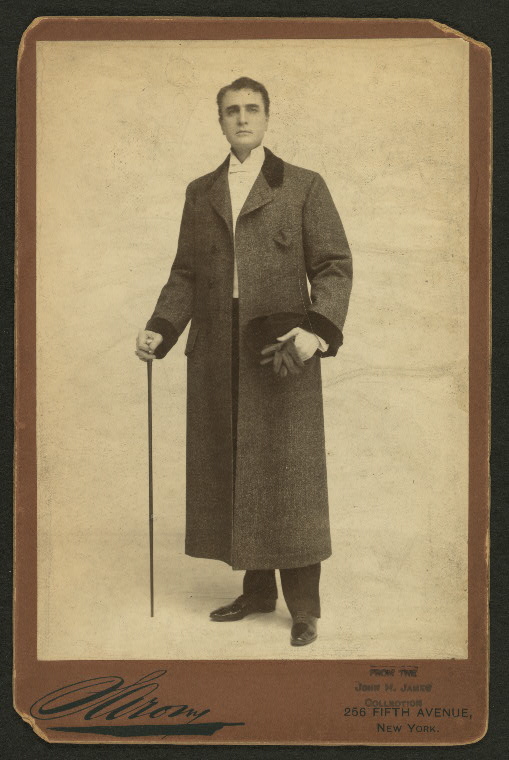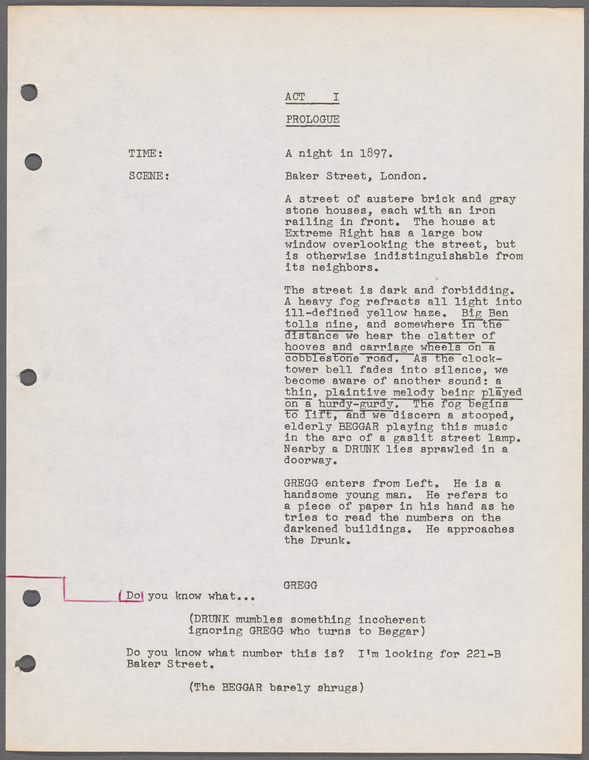Sherlock Holmes on Stage
This month, A Sherlock Carol, a new play featuring Sherlock Holmes and the characters of A Christmas Carol, opened off-Broadway at New World Stages. The play combines some of the plot and language of Dickens’s perennially performed story with that of several short stories by Sir Arthur Conan Doyle (most notably the 1892 Christmas mystery The Adventure of the Blue Carbuncle). Holmes, Scrooge, and their respective associates are no strangers to the New York stage; the Theatre Division at New York Public Library has documented many adaptations of the works in which they feature. As A Christmas Carol has become something of a secular Christmas pageant over the last century and a half, multiple adaptations are now performed annually in New York City alone. Even a much-abridged summary of the title as documented in our collections would require a blog series to itself, and there are already a number of blog posts on the Library’s site that mention the title. But Holmes, though also popular on the New York stage, is not so thoroughly covered. Here, then, are some of the highlights of Holmes on stage as represented in our collections.
Under The Clock (1893)
The first appearance of Sherlock Holmes on stage was likely Charles H. E. Brookfield playing the role in an hour-long "extravaganza" with music, Under the Clock. It was presented as part of a three-act bill at London’s Royal Court Theatre in November of 1893. Contemporaneous reviews preserved on Alexis Barquin’s Arthur Conan Doyle Encyclopedia suggest that the play was something like Gerald Alessandrini’s Forbidden Broadway parodies of Broadway theatre seasons. A visitor (a comic version of French author Émile Zola called Emile Nana) pays an innocent visit to 221B Baker Street. Holmes believes Nana is up to something, and with Watson and a version of Doyle’s Mrs. Hudson (here a “maid-of-all-work” named Hannah), Holmes tracks the man to the residence of the Lord Mayor of London. There, apparently to avoid detection, Holmes and his team perform parodies of scenes from recent theatrical hits, including Tennyson’s Robin Hood play The Foresters, Pinero’s The Second Mrs. Tanqueray, and B. C. Stephenson and Clement Scott’s play Diplomacy.
The play was performed the night before the first publication of "The Final Problem," which was intended by Doyle to be the last-ever Sherlock Holmes story. In it, Doyle introduces Sherlock Holmes’s arch-nemesis Professor Moriarty, and both Holmes and Moriarty are believed to have died in a fatal plunge over the Reichenbach Falls. Thus, Under the Clock was one of the very few Sherlock Holmes stage adaptations not even to mention Moriarty, as the character was not yet known to the public.
The Library preserves an original program from the production, as well as two photographs of each of the authors in character in our clippings and programs files.




William Gillette’s Sherlock Holmes (1899)
A few months after Under the Clock, another less comic stage adaptation (this one by Charles Rodgers) premiered at the Theatre-Royal in Glasgow, Scotland. The play involved Holmes hunting a Jack the Ripper-type character who has kidnapped Dr. Watson and caused him to lose his memory. Little is known about this production beyond what was printed in the original reviews. There were several other Sherlock-related performances through the 1890s, but in most cases, Holmes appears to have been a minor character or a comic cameo. It wasn’t until 1899, when a play written by Sir Arthur Conan Doyle and then rewritten by leading actor William Gillette opened in New York, that a Sherlock Holmes stage adaptation became a bona fide hit.
The play, titled simply Sherlock Holmes, was very loosely based on the first Sherlock Holmes short story, "A Scandal in Bohemia", which featured the fictional American opera singer Irene Adler. Adler outwits Holmes in the story, and Watson tells his readers that thereafter Holmes always referred to her simply as “the woman.” The hint of romance in that story has proven tempting for nearly every adapter of Sherlock Holmes, and though Adler appears only in the one story by Doyle, she is regularly featured in stage and screen adaptations.
Gillette also pits Holmes against Professor Moriarty, “the Napoleon of Crime.” Like Adler, Moriarty was not a regular character in Doyle’s work (he is mentioned in seven of the 60 Holmes stories and is alive in only two of them). Still, a “super-villain” worthy of opposing Holmes heightens the dramatic stakes on stage, so few stage adaptations do not include at least a mention of the character.
The Library preserves photographs and programs from the original production, as well as news reports and an early prompt book.
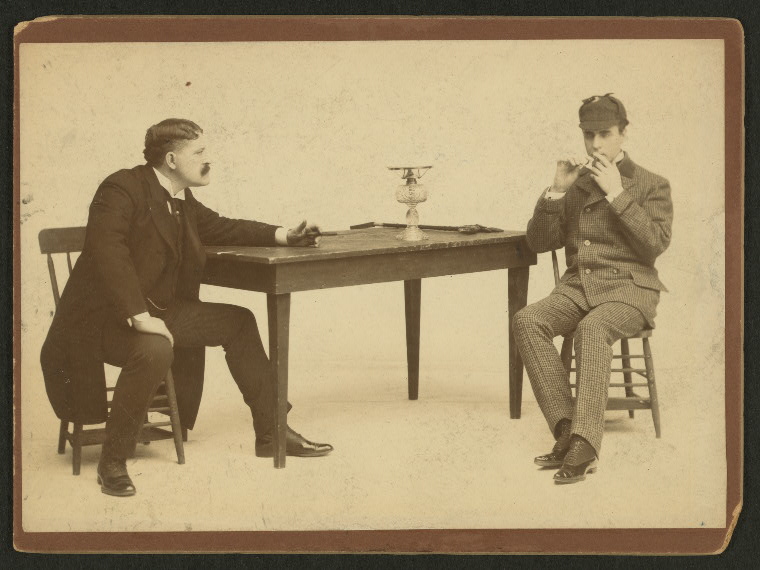



The Sign of the Four (1903)
More Sherlock Holmes adaptations, authorized or otherwise, followed Gillette’s hit. In November of 1903, Charles P. Rice’s adaptation of Doyle’s second Holmes novel, The Sign of the Four, opened at the West End Theatre in Harlem. The play would have opened just weeks after the publication of "The Adventure of the Empty House" revealed that Holmes had not died at Reichenbach and that new Sherlock Holmes stories from Doyle were forthcoming.

The Speckled Band (1910)
Doyle wrote two more Sherlock Holmes plays. In 1910 Doyle adapted "The Adventure of the Speckled Band" (the title was shortened for the stage to simply The Speckled Band).The play was written quickly to fill a theatre he had leased for an ultimately unsuccessful adaptation of his novel Rodney Stone. It was successful and had further productions in several cities in both the UK and the US.
At the Library we preserve two early typescripts from the first New York production (both with lists of the props and lighting cues used in the London production) as well as clippings, photographs, scrapbooks, and programs from the original production.





In 1921, Doyle wrote a loose one-act adaptation of "The Adventure of the Empty House" titled The Crown Diamond: An Evening With Sherlock Holmes. The play ran for roughly a month in London and was then readapted into a new short story: "The Adventure of the Mazarin Stone" (one of the few Holmes stories told in the third person to match the dramatic point of view of the play). The script can be read at the Arthur Conan Doyle Encyclopedia.
Sherlock Holmes: A New Play in Three Acts (1953, Ouida Rathbone)
For the first four decades of the 20th century, Holmes most commonly appeared on stage in the version written by Doyle and William Gillette. Gillette continued to perform the role almost to the end of his life (his last performance as Holmes was in a California production in 1932, when he would have been 79). Gillette died five years later in 1937, and two years after that a new Holmes, Basil Rathbone, defined the character for a generation on both radio and film. Rathbone appeared in 14 Sherlock Holmes films between 1939 and 1946 and in hundreds of radio dramas. In 1953, a Sherlock Holmes play written by his wife, Ouida Rathbone, opened on Broadway to disastrous reviews and closed three days later. The play is loosely based on "The Bruce Partington Plans" with bits of "The Adventure of the Empty House" and "The Final Problem", and includes Irene Adler from "A Scandal in Bohemia". The Library preserves a copy of the script for this play, as well as many photographs of this production.
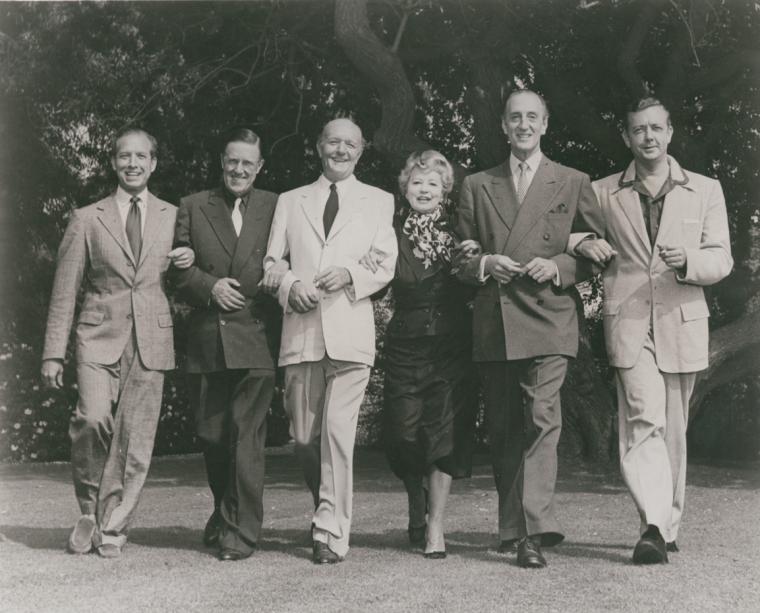
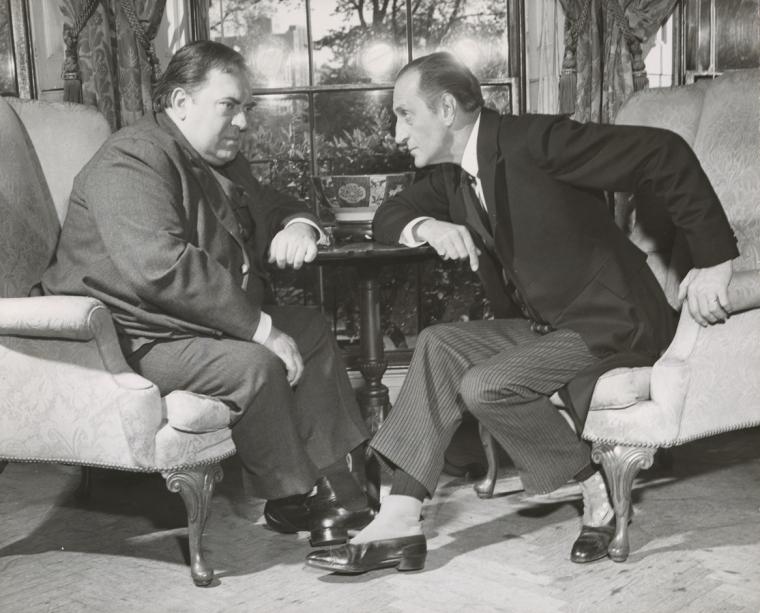
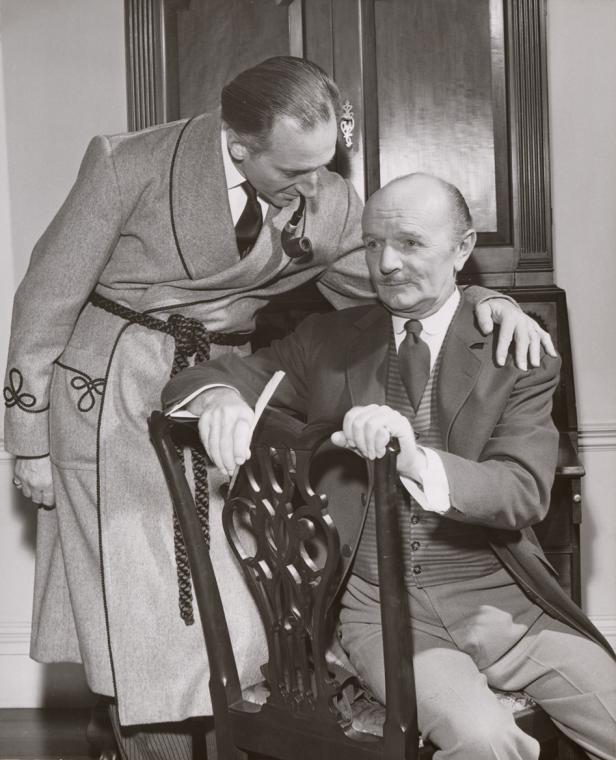
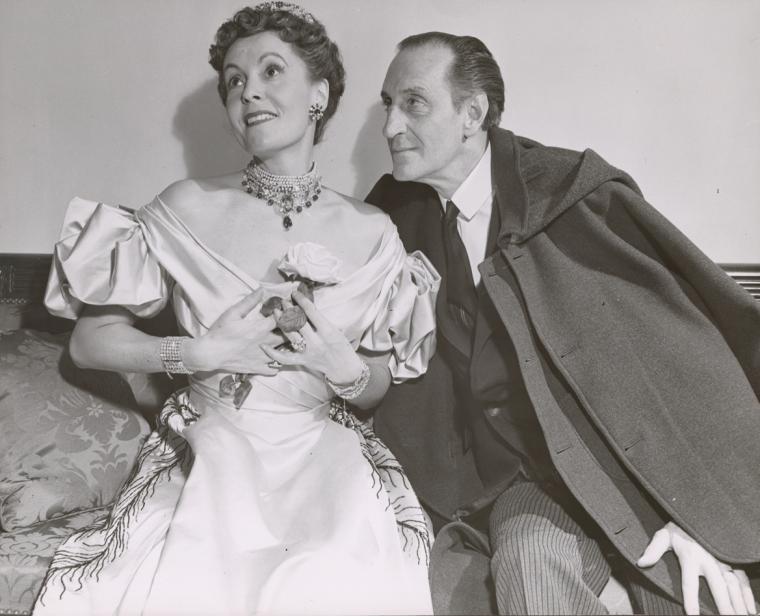



Baker Street (Musical, 1965)
In the early 1960s, producer Alexander Cohen decided to produce a musical version of the Sherlock Holmes stories. He first hired British director Michael Langham to stage the piece, then South Pacific director and book writer Josh Logan. Neither worked out, so Cohen approached fellow producer Harold Prince, who had recently directed She Loves Me on Broadway. Prince, eager to develop his directing résumé, agreed. The musical, Baker Street, opened to mixed reviews at the enormous Broadway Theatre, where it struggled to fill the house.
The Library preserves a great deal of material related to this show in the papers of the various collaborators (Harold Prince, Alexander Cohen, Ruth Mitchell, Jerry Bock, etc.). As part of the 2019 exhibition on the life and career of Harold Prince, much of this material was digitized.
On our digital collections you can read, with permission of the rights holders, the entire libretto of Baker Street:
Most of the photographs of the original production taken by Friedman-Abeles have been digitized as well, so it is possible to animate a few scenes from the production:




Frank Dunlop’s revival (1974-1975)
In 1974, director Frank Dunlop and the Royal Shakespeare Company revived William Gillette’s adaptation of the stories in both London and Broadway, garnering rave reviews. The Theatre Division preserves several photographs of this production taken by Martha Swope.
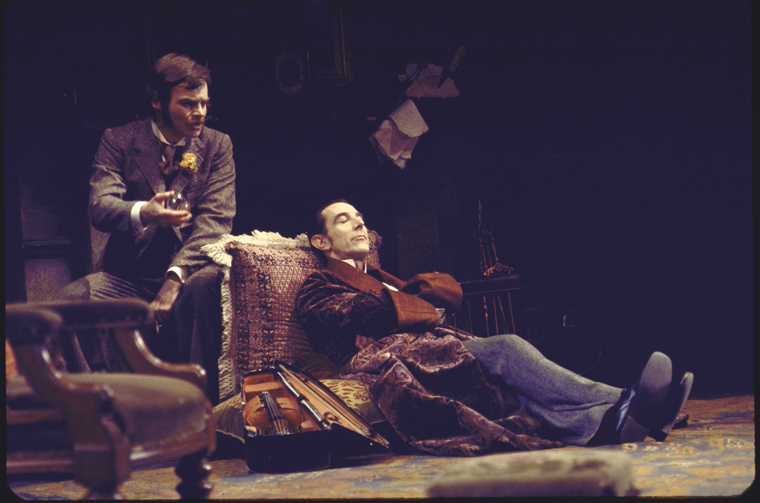
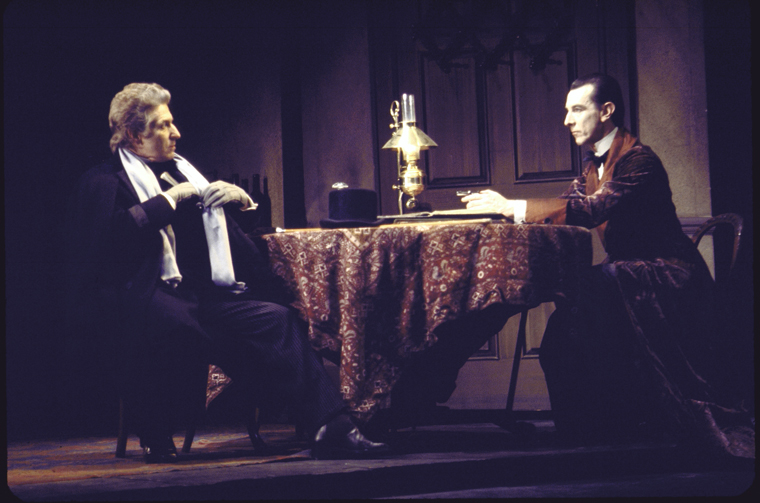
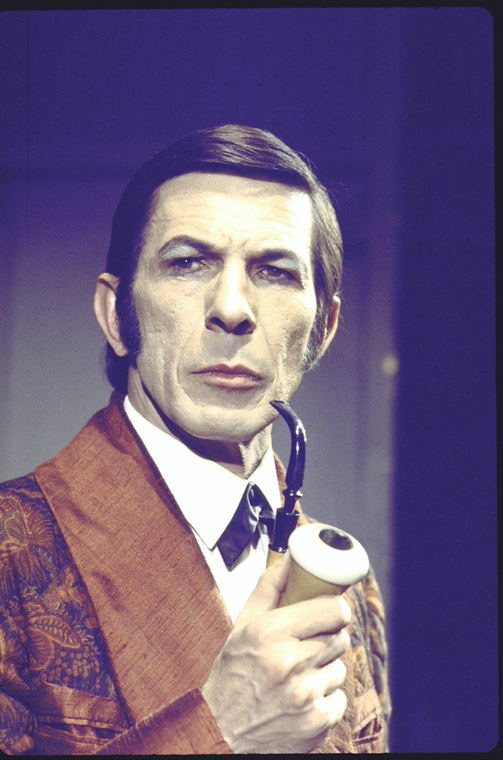
The Crucifer of Blood
Perhaps inspired by new interest in Holmes onstage generated by the RSC revival, playwright, director, and composer Paul Giovanni wrote a new Holmes stage adaptation, The Crucifer of Blood, which he directed himself on Broadway to great acclaim in 1978. Giovanni directed his play in London the following year, and, in 1980, in a Los Angeles production that featured Jeremy Brett, the famed television Sherlock Holmes, as Dr. Watson. The Library preserves photographs of the New York production, as well as scenic designs by John Wulp.
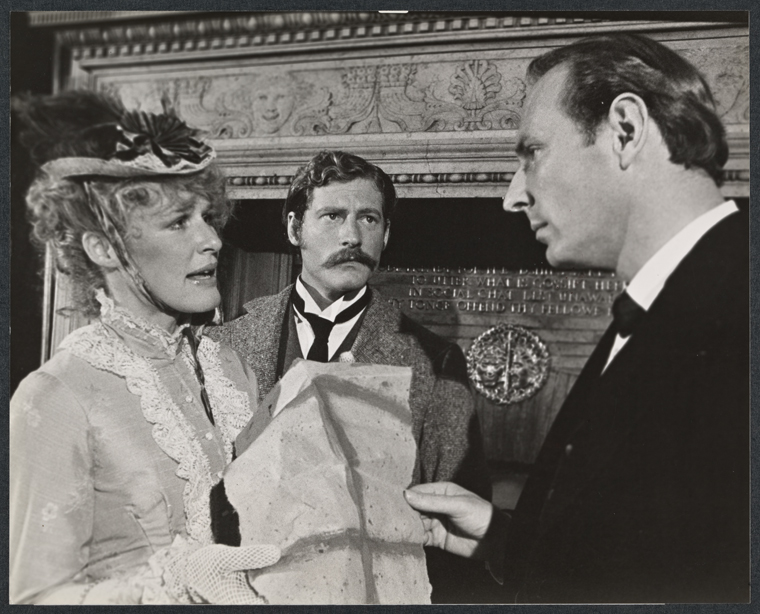


Sherlock’s Last Case
The most recent appearance of Holmes on Broadway was in the 1987 Charles Marowitz play Sherlock’s Last Case, which starred Frank Langella as Holmes. The play ran for just over three months on Broadway, but is now regularly produced around the country. Marowitz’s script is not closely based on any of Doyle’s stories, nor does it include either Professor Moriarty or Irene Adler (though Moriarty is mentioned and a love interest for Holmes does emerge). The play was directed by A.J. Antoon (who had, three years prior, directed Chita Rivera in the Kander and Ebb musical The Rink). The Library preserves Antoon’s papers including his directing script. Researchers can also find an original poster from the Broadway production and many photographs.



The final Sherlock Holmes stories (collected as The Casebook of Sherlock Holmes) will pass into the public domain in 2023, so we are likely to see even more adaptations in the near future. Interest in Sherlock Holmes is now as high as ever, with movies, television adaptations, and pastiche novels proliferating each year. If Holmes has not been onstage as a character on the Broadway stage for some years, the stories are frequently referenced (in, for example, Simon Steven’s dramatic adaptation of The Curious Incident of the Dog in the Night-Time). For now, A Sherlock Carol provides off-Broadway audiences with a holiday helping of Holmes, and I expect it will not be long before he arrives on Broadway once again, extra-canonical deerstalker hat and all.
Image used in this post from the Friedman-Abeles Collection have been preserved, cataloged, and digitized through the generosity of Nancy Abeles Marks and the Joseph S. and Diane H. Steinberg Charitable Trust.
Read E-Books with SimplyE
 With your library card, it's easier than ever to choose from more than 300,000 e-books on SimplyE, The New York Public Library's free e-reader app. Gain access to digital resources for all ages, including e-books, audiobooks, databases, and more.
With your library card, it's easier than ever to choose from more than 300,000 e-books on SimplyE, The New York Public Library's free e-reader app. Gain access to digital resources for all ages, including e-books, audiobooks, databases, and more.
If you don’t have an NYPL library card, New York State residents can apply for a digital card online or through SimplyE (available on the App Store or Google Play).
Need more help? Read our guide to using SimplyE.
